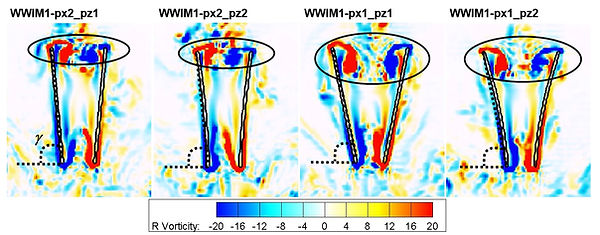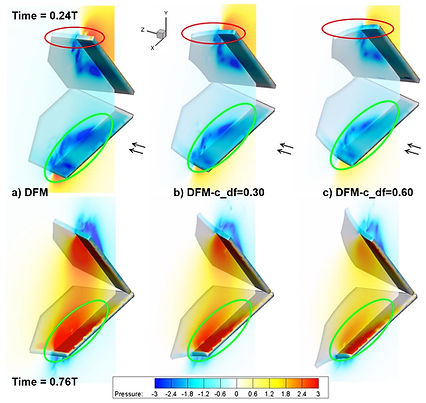
PUBLISHED RESEARCH
Validation of immersed boundary method for the numerical simulation
of flapping wing flight
Tay, W. B., Deng, S., van Oudheusden, B. W., & Bijl, H. (2015)
Computers & Fluids, 115, 226–242.
We have been using our in-house immersed boundary method (IBM) solver for almost all our numerical research. Here, we compare the two classes (continuous and discrete forcing) of the immersed boundary method (IBM) for its suitability as a simulation tool for the analysis of the moving wings of the flapping micro aerial vehicles (FMAVs), for flows at Re = 5,000 to 10,000. This is accomplished by comparing between the numerical (IBM and body-conforming grid flow solvers) and experimental results of moving airfoils / wings from literature.

Symmetrical and non-symmetrical 3D wing deformation of flapping
micro aerial vehicles
Tay, W. B. (2016). Aerospace Science and Technology, 55, 242–251.
Wing deformation can improve the performance of flapping wing MAV. Although this can be achieved through passive wing deformation, it is not possible to tune the deformation easily to obtain maximum performance. With the advancement in smart materials, prescribed deformation to improve maximum performance is becoming more practical. In this study, we study different forms of deformation, including a unique single-sided deformation to improve the wing’s performance. This study extends the previous 2D study to 3D, and investigates if the favorable results in the earlier study are also applicable in 3D.

Effect of different types of wing-wing interactions in flapping MAVs
Tay, W. B. (2017). Journal of Bionic Engineering, 14, 60–74.
Wing-wing interaction (WWI), such as the clap and fling motion (CFM), occurs when two wings are flapping close together, improving performance. We intend to design a hovering flapping MAV (FMAV) which makes use of WWI. We want to investigate the effects of flexibility, kinematic motions, and two- to six-wing flapping configurations on the FMAV through numerical simulations.

Numerical simulation of a flapping four-wing micro-aerial vehicle
Tay, W. B., van Oudheusden, B. W., & Bijl, H. (2015).
Journal of Fluids and Structures, 55, 237–261.

A three-dimensional numerical simulation of a four-wing flapping micro-aerial vehicle (FMAV), known as the DelFly Micro, is performed using an immersed boundary method Navier–Stokes finite volume solver at Reynolds numbers of 5500 (forward flight condition). The objective of the present investigation is to gain an insight to the aerodynamics of flapping wing biplane configuration, by making an analysis on a geometry that is simplified, yet captures the major aspects of the wing behavior.

